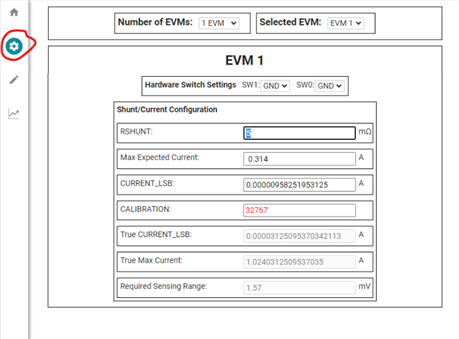Hi,
We are using a number of INA226s in our design to measure the currents.
The INA226 datasheet provides details on how to calculate the Current_LSB (Current_LSB = Max Expected Current/2^15), and use that in the Cal Reg (CAL = 0.00512/(Current_LSB*RShunt) to set up the device.
The INA226 evaluation board user guide also gives the range of the Current_LSB, Max Expected Current/2^15 ≤ Current_LSB ≤ Max Expected Current 2^12.
On our design, we’ve set Current_LSB = Max Expected Current/2^15. However, when measuring currents <0.5A, the results don’t match the expected values. When Current_LSB = Max Expected Current/2^12, the measured current is closer to the expected value.
For example, with Max Current of 0.314A and Max current/2^15 = 9.58uA, the current is reported as 0.096A. Using Max Current/2^12 = 76.6uA, the reported current is 0.313A.
As another example, with Max Current of 1.775A and Max current/2^15 = 54.17uA, we get a reported current of 1.704A. Using Max Current/2^12 = 433.35uA, the reported current is 1.705A.
Why is there such a large discrepancy between the measured and expected currents depending on the LSB value? It also looks like the accuracy is dependent on the magnitude of the measured current, is that the case?


